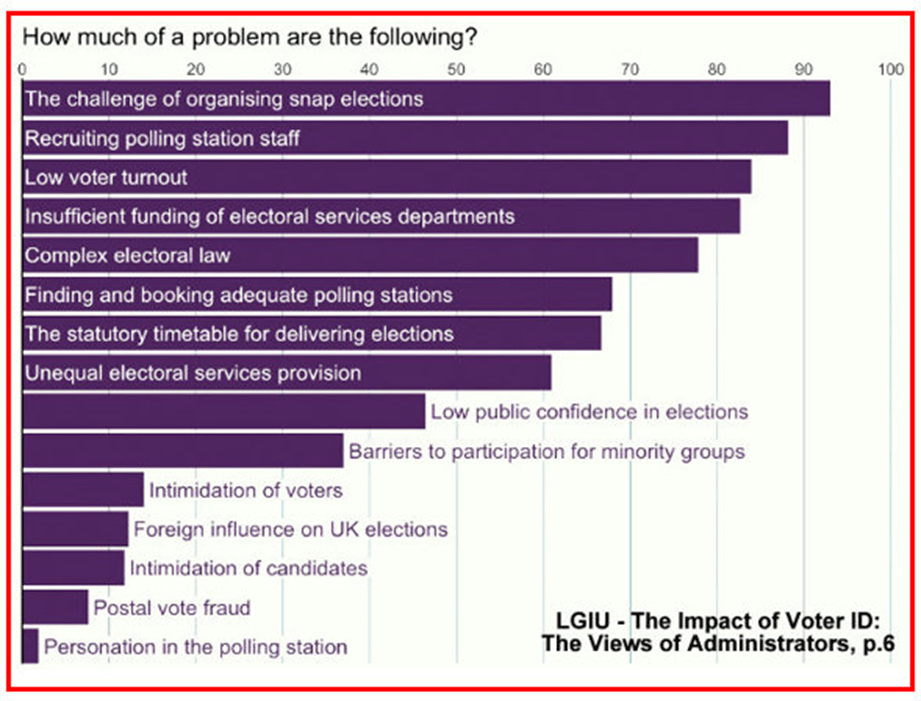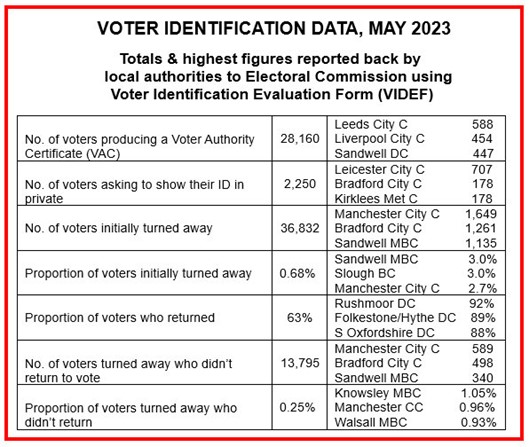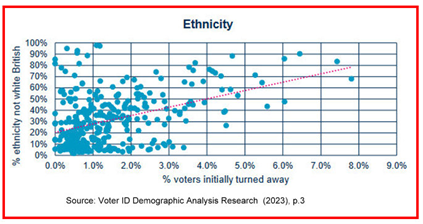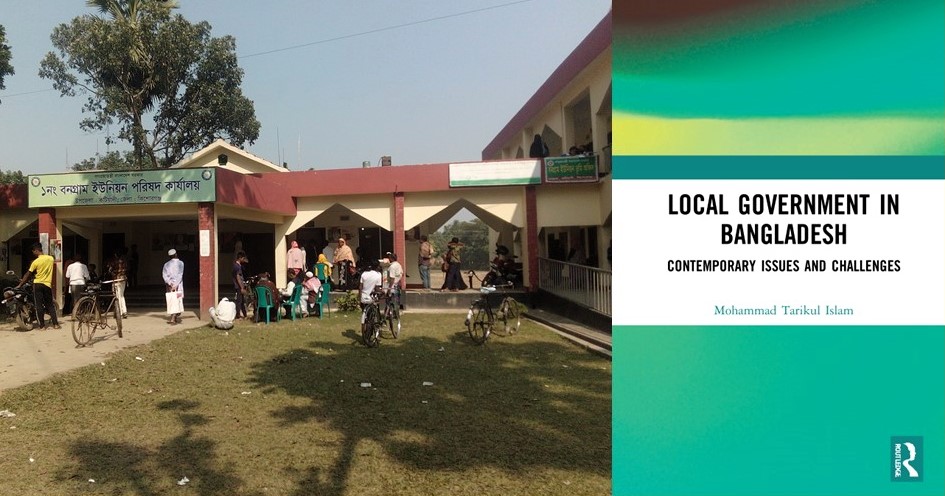Andrew Coulson

Image: https://www.flickr.com/photos/carrienelson/
Until recently South Cambridgeshire Council was mainly known for being the only council in the UK which completely encircles another council, the City of Cambridge.
Now it has a place in history for a more lasting reason. In January this year it began a trial which put much of its workforce onto a 4-day week, asking them to do in four days what previously they had done in five, for the same pay and without employing extra staff or reducing opening hours for the public.
Michael Gove took exception, and in October his Department issued non-statutory guidance which made it clear that he does not want councils to implement four-day weeks[1]. His junior minister, Lee Rowley, wrote to the Council in June and again in September asking it to abandon its trial.[2] But the terms and conditions of council employment are not the business of central government, and to that extent the Council has the right to continue. Then, on 3 November, a senior civil servant wrote to the Council ordering them either to stop the trial, or to supply him with regular detailed information about their performance.[3] To do this he invoked the concept of “Best Value”, also used in the Guidance note, claiming that the pilot means that the Council is not giving value-for-money to its taxpayers.
A bit more about South Cambridgeshire Council. 35 of its 45 councillors are LibDem, including its Leader, Councillor Bridget Smith. It provides services in the small towns and villages around Cambridge, working closely with the city council on matters that affect them both, such as sensitive planning proposals. 162,000 people lived there in 2021. House prices and average incomes are high, and it is one of the best places in the country to live. The council was and still is one of the best-performing in England.
The pilot is being evaluated by the Bennett Institute for Public Policy at the University of Cambridge. After nearly a year, the indications are extremely encouraging.[4] In 27 October Bridget Smith reported that “sickness rates have fallen by a third, staff turnover has reduced by 36%, and complaints about services involved are down. 9 of 16 areas studied showed “substantial improvements in performance over the previous year”. The council has been better able to recruit staff, and now has 14 fewer “interim managers” recruited through an agency on a short-term basis and paid much more than normal local government rates, but seldom living in the area and with little long-term commitment to it. This has saved the Council considerable sums of money.[5]
These positive outcomes should not surprise civil servants, other researchers or Mr Gove. It is backed up by other research, for example a recent Fabian report about what the UK can learn about shorter working weeks from Germany.[6] Or research carried out in 2022 by a large team of experts in England and America led by the consultancy Autonomy.[7] This studied 61 UK businesses which have implemented shorter working weeks in a variety of changes (such as having lower staffing on Mondays and Fridays with half the employees working on either the Monday or the Friday in any week). In almost all these companies the shorter working week improved productivity, staff recruitment and morale.
“Best Value” was invented in the 1980s when it was realised that the best outcomes would often not be achieved by paying the lowest prices. We do not get our cars serviced at the cheapest garages, or our roofs repaired by the cheapest contractors. We prefer someone we know, or who comes with good recommendations who will want to work with us in future, and so will not take short cuts, use poor quality parts, or put sufficient cement in its concrete. To make an informed decision, you also need information about the quality of other work done by the possible contractors. If you do not have that information, then you need to contract for a short period, and learn from the results. Many councils, with all types of political control, were able to demonstrate that Best Value was obtained by keeping a service in-house, not using external contracts.[8]
In this context, the invocation of Best Value reeks of despair: Gove’s civil servants cannot think of any other way to stop the trial. He may fear that other councils who adopt the same policies may not get the same benefits. But if South Cambridgeshire ever gets tested in a court of law, there is a strong probability that the Government will lose.
This is not the only recent populist announcement: Ricki Sunak announced at the Conservative Party Conference that he is trying to make it impossible for councils to introduce 20 mph zones in residential areas, even though this is a popular policy (not least among many car drivers) which saves lives and reduces pollution.[9] He is also attempting to limit the number of low-traffic neighbourhoods[10] and has directed councils not to introduce multiple recycling bins, even though it is cost-effective for homeowners and businesses to sort as much of their waste as possible in advance.[11] He does not appear to recognise that councils are local authorities whose legitimacy comes from elections, and which can experiment and try out new ideas. They have a great deal more practical experience to draw upon than he does, or his civil servants.
[1] https://www.gov.uk/guidance/four-day-working-week-arrangements-in-local-authorities
[2] https://www.personneltoday.com/hr/four-day-week-trial-2/
[3] https://www.gov.uk/government/publications/south-cambridgeshire-district-council-best-value-notice
[4] https://scambs.moderngov.co.uk/documents/s131267/Appendix%202a%20Bennett%20Institute%20Evaluation%20of%20the%20KPIs%20final.pdf
[5] https://www.scambs.gov.uk/four-day-week-trial-extension-after-independent-analysis-shows-services-maintained-and-some-improved
[6] https://fabians.org.uk/wp-content/uploads/2023/11/231106_Nein-to-Five_EN_final_online-6-nov.pdf. Or https://www.weforum.org/agenda/2023/10/surprising-benefits-four-day-week/ . Or from the World Economic Forum https://www.weforum.org/agenda/2023/10/surprising-benefits-four-day-week/
[7] https://autonomy.work/portfolio/uk4dwpilotresults/
[8] See, for example, statutory guidance issued in 2011 when Eric Pickles was Secretary of State for Communities and Local Government, at https://assets.publishing.service.gov.uk/media/5a7968ab40f0b63d72fc591f/1976926.pdf. Or articles in Andrew Coulson (ed.) Trust and Contracts: Relationships in Local Government, Health and Public Services, Policy Press, 1998.
[9] https://news.sky.com/story/rishi-sunak-to-block-councils-imposing-new-20mph-speed-limit-zones-12972106
[10] https://www.theguardian.com/uk-news/2023/jul/30/rishi-sunak-orders-review-of-low-traffic-neighbourhood-schemes
[11] https://resource.co/article/government-scraps-seven-bins-simpler-recycling
Andrew is a nationally-recognised expert on scrutiny in local government and is particularly interested in governance by committee. He is a columnist for the Birmingham Post and associate of INLOGOV. He writes in a personal capacity.
[1] https://www.gov.uk/guidance/four-day-working-week-arrangements-in-local-authorities
[2] https://www.personneltoday.com/hr/four-day-week-trial-2/
[3] https://www.gov.uk/government/publications/south-cambridgeshire-district-council-best-value-notice
[4] https://scambs.moderngov.co.uk/documents/s131267/Appendix%202a%20Bennett%20Institute%20Evaluation%20of%20the%20KPIs%20final.pdf
[5] https://www.scambs.gov.uk/four-day-week-trial-extension-after-independent-analysis-shows-services-maintained-and-some-improved
[6] https://fabians.org.uk/wp-content/uploads/2023/11/231106_Nein-to-Five_EN_final_online-6-nov.pdf. Or https://www.weforum.org/agenda/2023/10/surprising-benefits-four-day-week/ . Or from the World Economic Forum https://www.weforum.org/agenda/2023/10/surprising-benefits-four-day-week/
[7] https://autonomy.work/portfolio/uk4dwpilotresults/
[8] See, for example, statutory guidance issued in 2011 when Eric Pickles was Secretary of State for Communities and Local Government, at https://assets.publishing.service.gov.uk/media/5a7968ab40f0b63d72fc591f/1976926.pdf. Or articles in Andrew Coulson (ed.) Trust and Contracts: Relationships in Local Government, Health and Public Services, Policy Press, 1998.
[9] https://news.sky.com/story/rishi-sunak-to-block-councils-imposing-new-20mph-speed-limit-zones-12972106
[10] https://www.theguardian.com/uk-news/2023/jul/30/rishi-sunak-orders-review-of-low-traffic-neighbourhood-schemes
[11] https://resource.co/article/government-scraps-seven-bins-simpler-recycling









